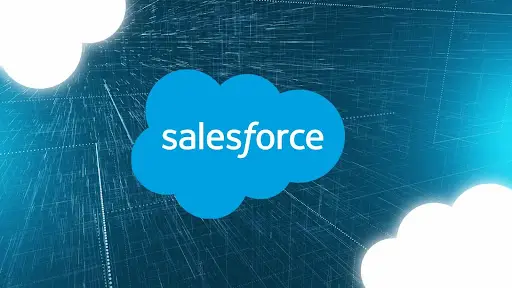Salesforce as the Ultimate Single Source of Truth: Integrating Business Lifecycle with RevOps Flow

As organizations work towards different goals like increased efficiency, faster decision-making, reduced risks, and better revenue, it becomes increasingly difficult not to talk about the role of RevOps in achieving them. Traditionally, sales, marketing, services, and finance have operated via distinct, specialized systems—like a billing tool that was suitable only for one-time purchases but not for subscriptions. Or an order management system that integrated with an E-commerce store but not with a kiosk. The absence of seamless data flow between these systems means manual data transfer, resulting often in incomplete customer information for decision-making. This ultimately lead to revenue loss for the company. To address this, the integration of different functions into a unified RevOps flow is crucial. At the forefront of this transformative shift stands Salesforce, positioned not just as a CRM platform but as the singular source of truth for the entire business lifecycle. RevOps using Salesforce unifies the functions within the same ecosystem which enables cohesive and informed actions. Let us now understand how different Salesforce solutions at different stages of business lifecycle help in making this formidable ecosystem the ultimate single source of truth. Stage 1: Marketing Cloud For Personalized Marketing Campaigns Marketing Cloud empowers businesses to create personalized, data-driven marketing campaigns. The integration of Marketing Cloud into the RevOps flow allows you to align marketing efforts with your finance objectives. For starters, you can leverage this platform’s automation and analytics capabilities to optimize lead generation and nurture prospects effectively. The collaborative environment offered by Marketing Cloud also ensures that the insights are seamlessly shared across the organization for inclusive decision-making related to marketing strategies. Stage 2: Sales Cloud For Early Stage Growth The integration of the Sales Cloud into the RevOps flow ensures that your sales team operates on a unified platform, fostering collaboration and streamlining the entire sales process. Your team gains a comprehensive view of the entire sales pipeline, allowing them to identify trends, find bottlenecks, forecast sales accurately, and make instant decisions. The automation features in Sales Cloud enable sales representatives to automate routine tasks, such as data entry and follow-up emails, allowing them to focus more on engaging with prospects. All these benefits lead to improved lead-to-revenue conversion rates and an accelerated sales cycle. Stage 3: Salesforce CPQ for Accurate Quote Creation Salesforce CPQ (Configure, Price, Quote) is designed to simplify and accelerate the quoting and contracting processes. By integrating CPQ into your RevOps framework, you can ensure that your sales teams generate accurate quotes based on real-time product and pricing information. This not only expedites the sales cycle but also minimizes errors in the quoting process, enhancing customer satisfaction. The seamless connectivity between Sales Cloud and Salesforce CPQ ensures that all teams are working with consistent data, promoting a synchronized approach across the organization. This ultimately leads to improved revenue. Stage 4: Service Cloud for Exceptional Customer Experience Service Cloud enables organizations to deliver exceptional customer service by providing an environment for case management, customer support, and field service. Integrating Service Cloud into your RevOps flow ensures that customer service teams have access to the same customer data as sales and marketing, facilitating a complete understanding of customer interactions. This alignment enhances customer satisfaction, improves retention, and contributes to upsell and cross-sell opportunities, driving overall revenue growth. Stage 5: Accounting Seed for Financial Management Accounting Seed is a robust accounting solution built on the Salesforce platform. Its integration into the RevOps framework completes the end-to-end business process, ensuring that your financial data is seamlessly connected with sales, marketing, and service information. With Accounting Seed, you can manage invoicing, financial reporting, and other accounting functions directly within Salesforce. This integration minimizes data silos, reduces manual errors, and provides a real-time financial overview for better decision-making across the entire organization. Parting Thoughts Salesforce’s suite of products, including Sales Cloud, Salesforce CPQ, Marketing Cloud, Service Cloud, and Accounting Seed, collectively form a strong ecosystem that supports and enhances Revenue Operations. The integration of these solutions to form a Single Source of Truth ecosystem empowers organizations to streamline processes and make informed, data-driven decisions. As businesses continue to evolve, a unified RevOps strategy built on Salesforce becomes not just a competitive advantage but a strategic imperative for sustained success in the ever-changing market landscape. But you need not be alone in this journey towards RevOps excellence. Brysa, the UK’s leading Salesforce expert, can be your strategic partner and guide you through the intricacies of implementation, customization, and ongoing enhancement, thereby unlocking the full power of Salesforce. To know more about Brysa, contact us now.
Boosting OOH Ad Efficiency: The Power of Strategic Tech Integration

The realm of Out-Of-Home (OOH) advertising, with its illustrious history of billboards and digital displays, stands as a vibrant testament to the advertising world’s capacity for innovation and endurance. Yet, beneath its impressive facade, the industry contends with a host of operational challenges that stifle its full potential. The adoption of emerging technologies has been sluggish, manual processes prevail, and campaign accountability remains inconsistent. The industry’s Achilles’ heel has traditionally been its reliance on legacy systems. While once sufficient, the manual and spreadsheet-dominated approaches are now outdated, especially in an era of rapid expansion. To sustain growth and remain competitive, the OOH industry is recognizing the imperative for a technological overhaul. Operational efficiency has now become the critical for industry leaders in OOH advertising especially in challenging market conditions. These frontrunners are not merely adopting new technologies; they are integrating them seamlessly with existing business systems. A prime example is the incorporation of customer relationship management (CRM) tools like Salesforce into their technological arsenal, combined with sophisticated advertising platforms. This convergence is creating a formidable force multiplier for operational capabilities. Optimized Ad Spaces The transformation sparked by this integration is substantial and multi-faceted. Automating key functions, such as campaign management, liberates OOH companies from the constraints of manual operations, paving the way for optimized use of advertising spaces. It fosters an environment where campaigns can be adjusted dynamically to meet real-time objectives, ensuring that advertising efforts are both effective and efficient. The benefits of embracing this new technological paradigm extend beyond automation. Industry professionals reminisce on the pre-integration days, often amazed at the stark contrast. Tasks that once consumed hours are now executed with a few keystrokes and mouse clicks. What emerges is a streamlined operation that not only increases the speed and agility of sales cycles and campaign deployment but also enhances the strategic deployment of OOH advertising inventory. Crucially, the adoption of integrated CRM, Booking and Advertising platforms has fortified OOH businesses with the tools to manage their inventory and client relationships more effectively. This synergy allows for real-time inventory updates, quicker booking, and the ability to manage campaigns with a level of precision previously unattainable. The outcome is a surge in operational efficiency, a figure that symbolizes a revolution in how OOH businesses operate. Connecting CRM & CMS Let’s consider a real-world example. i-media, an OOH business specializing in motorway service area advertising, faced these very challenges. We worked with them and implemented the solution in the form of integrating Salesforce with Broadsign’s advertising management platform. Before this, scheduling campaigns post-booking was a manual task leading to loss of time and of opportunities. We leveraged Broadsign’s API capabilities to seamlessly integrate Salesforce with i-media’s campaign management workflow, which enabled i-media’s sales team to create campaigns within their Salesforce CRM, simultaneously booking and scheduling them directly within the Broadsign Platform. The outcomes speak for themselves: Higher revenue and profitability growth A 40% increase in operational efficiency Immediate inventory access, leading to faster campaign turnaround times for advertisers and agencies AI Will Accelerate Yet, the promise of technology in OOH advertising will not stop with current advancements. Looking forward, the industry is set to undergo further transformations as it taps into the potential of artificial intelligence (AI) and machine learning. These technologies promise to refine data analytics, elevate real-time targeting, and introduce a new level of programmatic buying to the OOH space. The OOH industry, therefore, stands on the brink of a digital renaissance. The integration of sophisticated platforms with robust business systems isn’t just a nice-to-have—it’s the new benchmark for an industry that’s ready to break away from its traditional constraints. As technology advances, it’s likely that OOH advertising will not only keep pace but also has the potential to shape the momentum of the advertising world at large especially with the impending death of 3rd party cookies. The OOH industry’s evolution is being driven by a need for efficiency and effectiveness, achievable through the strategic integration of technology. This approach is a call to action for OOH businesses: to thrive in tomorrow’s market, the digital transformation is not just beneficial but essential. The future of OOH advertising is an exciting, digitally-driven landscape, promising a world of opportunities for those who choose to be bold and embrace it.
Salesforce Single Source Of Truth: Benefits, Challenges, and Solutions

In the world of sales, data is everything. It provides valuable insights and tools for making informed decisions, optimising strategies, and effectively managing sales operations. However, this also means when important data is scattered across different systems, decision-making can quickly become overwhelming and unreliable for sales professionals. This is where the concept of a Single Source of Truth(SSOT) comes into the picture. It redefines the way you approach sales data management and ensures that the sales team always operates with accurate and consistent data. Here at Brysa, we strongly believe there are plenty of reasons to choose Salesforce as your single source of truth system. In this post, we will take you through the reasons for this and also highlight the challenges you might face in this process. Why should you adopt Salesforce Single Source Of Truth? The massive popularity of Salesforce has always been due to its ability to offer a single source of truth to the sales team about their sales pipeline. Salesforce is an excellent candidate for being the single source of truth due to its following features: Dashboards and reports: One can create data-rich reports and dashboards in minutes, thanks to Salesforce’s drag-and-drop interface. Highly configurable database: You can modify the Salesforce database without writing a single line of code. For instance, you can add fields or create custom objects and add them to the database. The best part is they are instantly ready for use. You can even set strong validation rules with a few clicks. Adaptable security model: Like the database, you can configure the Salesforce security model without writing code. You can easily control access to objects, fields, reports, and dashboards. Custom fields and record types: You can create them to track specific types of data. For instance, customer preferences or sales opportunities. They ensure that you always have access to accurate and up-to-date data, thereby preventing costly mistakes. Chatter and Groups: These functions ensure efficient team collaboration, improving communication and coordination between teams. This ensures that there is no miscommunication related to data. Here are a few other reasons why Salesforce is a single source of truth system: Increased Visibility: Since Salesforce offers access to comprehensive customer and business data, your sales teams can personalise their pitch and identify upsell opportunities, thereby boosting overall revenue. Improved Decision-Making: Salesforce offers valuable insights to sales teams, helping them make data-backed decisions. Using Salesforce, one can easily analyse sales trends and develop successful business strategies. Greater Efficiency: Salesforce streamlines business processes. This saves time and boosts the overall efficiency of your sales team. Enhanced Customer Experience: Salesforce helps in creating personalised customer experiences. This means increased loyalty, repeat business, and revenue via customer retention. Challenges faced by businesses while implementing Salesforce Single Source Of Truth Here are some obstacles that you might experience along with the corresponding solution: User Data Input Challenges Users sometimes miss adding data into Salesforce. This could be attributed to insufficient training or a lack of understanding of its benefits. Solution: Provide comprehensive training and support. You can adopt dynamic forms that display only relevant fields. This automatically reduces data input time, thereby encouraging users to input data. You can also utilise URL hacking to pre-fill data based on related records. This will save time and prevent incomplete or missing data. Dealing with Duplicate Data Duplicate data is another recurring issue while implementing Salesforce as your single source of truth. This can be attributed to multiple inputs or data imports from a variety of sources. Solution: You can employ third-party tools for automatic duplicate data identification and removal. You can also establish different validation rules to prevent duplicate input from users. Unique Identifier Implementation When there is a lack of unique identifiers for different records, it can lead to confusion in data retrieval. Solution: You can use different Salesforce data cleaning solutions to generate unique identifiers automatically. This will help in maintaining consistent naming conventions for clarity. Managing Technology Costs The expense of the technology required for a Single Source of Truth can be a significant hurdle for most businesses. Solution: Explore free or cost-effective alternatives and leverage open-source data integration tools to reduce costs and justify the investment. How can Brysa help overcome these challenges? As you have seen from this post, achieving Salesforce SSOT is not easy. Even though we have listed down different solutions for these challenges, it becomes a daunting task for most businesses, especially if you are planning to invest in the Salesforce ecosystem. This is where Brysa can help. We are the UK’s leading Salesforce implementation and maintenance partner who have transformed the sales landscape of several businesses. We can transform your Salesforce into SSOT so that you reap the benefits discussed in this post. Contact us to know more about how we can help.
The Cost of Inefficiency: Pitfalls of Neglecting Systems During Growth

Businesses across the globe are in constant pursuit of ways to expand their customer base, operations, and revenue streams. In this relentless pursuit of expansion, the temptation to make use of existing resources, cut corners, and be frugal is unavoidable. Most businesses try to scale their operations without the necessary systems and processes in place. Unfortunately, this can diminish their potential for sustained success and profitability. In this blog, we will delve into the pitfalls associated with growing without investing in proper systems or when they become “penny-wise and pound-foolish.” Also, we will understand how Salesforce implementation is the magic bullet to solve most of these problems. Challenge #1: Data Discrepancies As your business expands, it will rely considerably on accurate data as it helps in making informed decisions. Without proper systems for data collection and data management, you will end up making decisions based on incomplete, inconsistent, or erroneous information. This can lead to misfired strategies, missed opportunities, and potential financial setbacks. To counter this without proper systems, you may have to spend significant time manually cleaning and reconciling data, which will invariably divert your focus away from more strategic activities. Challenge #2: Lack of Visibility Effective resource allocation is the key to unlocking your business growth. Proper systems offer great visibility into different business aspects such as customer interactions, sales, finance, etc. These insights can help you allocate resources efficiently. Without visibility, your resources may be underutilised in some areas while overburdened in others, which can lead to wasted costs. Also, without proper visibility, you will not be able to proactively address issues before they become a major problem. Challenge #3: Employee Burnout Employee burnout is a multifaceted issue. It can have far-reaching consequences for both your organisation and for the employee. The absence of proper systems can overburden employees with increased workload. There will be constant fire-fighting and reduced quality of work without adequate support from systems. Your employee may even resort to working longer hours, which can result in fatigue, reduced work-life balance, and increased stress, all of which can lead to burnout in the long run. Challenge #4: Loss of Competitive Edge The right system can help in gathering, analysing, and acting upon real-time data and market trends. Without one, you may end up struggling to respond quickly to market shifts. This will obviously leave you at a disadvantage against more agile competitors. Also, without proper systems, you will not be able to track and assess emerging trends and opportunities. You will invariably miss out on innovation prospects, which will leave the field open to more innovative and proactive competitors. Challenge #5: Compliance and Security Risks Different industries and regions have different regulatory requirements. Your business must adhere to them to function without legal tussle. When you are supported by inadequate systems for data protection, it can result in non-compliance. This, in turn, can lead to regulatory fines, legal actions, and reputational damage. Also, we are living in an era replete with sophisticated cyber threats. Without proper systems, safeguarding sensitive data becomes difficult, thereby making your business more vulnerable to data breaches and security incidents. Challenge #6: Inefficient Processes This is probably the most obvious problem of growing without adequate systems. When you do not have proper systems in place, your employees will be forced to perform manual and repetitive tasks. It will not only consume their time but also make the tasks more prone to errors. Inefficient processes can also contribute to higher operational costs and delays in project execution. For instance, a lack of proper systems can make your communication process inefficient. Important messages might be lost in email clutter, or essential updates may not be readily accessible to all the relevant team members. Challenge #7: Negative Impact on Customer Experience As we have seen earlier, a lack of proper systems might lead to data discrepancies. This, in turn, can impact the customer experience in multiple ways. For example, your customers may receive communications with incorrect names, outdated contact information, or irrelevant offers. This can frustrate them and erode trust in the business. Also, without proper systems, your response times to customer inquiries, requests, or complaints can be significantly delayed. Lengthy response times can lead to customer dissatisfaction, especially in an era where prompt responses are expected. How to Eliminate these Challenges? Start by investing in a quality ecosystem like Salesforce, where you get access to most of the software and applications required to run a successful business. Salesforce offers a diverse suite of tools particularly involved in customer relationship management, sales automation, cloud services, etc. For example, Salesforce’s data management tools ensure great data accuracy and consistency. Similarly, Salesforce Service Cloud offers a comprehensive customer service solution, enabling efficient case management, self-service portals, and a 360-degree view of customer interactions, reducing service-related problems. Also, Salesforce offers workflow automation tools and process customisation capabilities, which can help streamline tasks and eliminate manual, repetitive work, thereby increasing your operational efficiency. However, like any other system, the extent of its impact depends on how well Salesforce implementation is carried out in your business. This is where a Salesforce implementation partner like Brysa comes into play. About Brysa Brysa is the UK’s leading Salesforce consultant, setting the standard for excellence in the implementation and optimisation of the Salesforce platform. With a deep commitment to helping businesses achieve their growth and efficiency goals, Brysa brings a wealth of expertise and experience to the table. We are the trusted partner to numerous organisations in this region as we offer tailored Salesforce solutions for all kinds of businesses. To know more about Brysa and how we can help your business implement and manage different Salesforce systems, contact us now.
Preparing Your Salesforce Tech Stack for a Stronger 2024

As we stand on the cusp of 2024, one can anticipate an upswing in market conditions. After all, consumer confidence is on the rise, and there is a newfound resurgence in demand for various products and services. Rapid advancement in technology is also unlocking new avenues for businesses to operate and engage with customers. In this context, Salesforce, with its extensive suite of customer experience and sales tools, is at the forefront of enabling organisations to succeed in this changing ecosystem. Now, if you wish to harness the opportunities presented by the anticipated market uptick in 2024, it is important to keep your Salesforce tech stack in optimal condition. This blog is a step-by-step guide on how to achieve this. Step 1: Assess your current tech stack Start with a thorough evaluation of your existing Salesforce setup. Pay attention to components, tools, and integrations that make up your Salesforce ecosystem. Evaluate the performance by assessing the speed, efficiency, and reliability of every tool and integration. Note down any performance bottlenecks in them. Bonus if you could gather feedback from team members who use Salesforce tools regularly. They can highlight specific pain points that they face regularly, resulting in a more holistic assessment. Key questions to answer in this step: How efficiently does your tech stack perform? What gaps exist in your current tech stack? How efficient are your integrations with other systems? Step 2: Set goals Goals offer a clear focus on what’s most important for your organisation. You can use goals to prioritise initiatives, making it easier to decide where to allocate resources and effort. Begin by identifying your organisation’s overarching business objectives for 2024. Most importantly, ensure that the goals are SMART (Specific, Measurable, Achievable, Relevant, and Time-bound). SMART goals are easier to track and evaluate. Some of the common goals include: Boost sales revenue Improve lead conversion rate Enhance customer retention rates Shorten sales cycle Key questions to answer in this step: What are your business objectives for 2024? How can Salesforce support your business objectives? Are your goals SMART? Step 3: Stay up-to-date When you are up-to-date with the latest trends in Salesforce, your organisation automatically gains a competitive edge. It allows you to leverage strategies that can put you ahead of competitors. For instance, by regularly reading tech news websites, industry publications, and blogs that cover Salesforce, and related technologies, you can anticipate the direction in which the industry is moving. This, in turn, helps you innovate and adapt your Salesforce tech stack to align with market demands and changing customer preferences. Staying current also helps you address emerging threats and ensure the security and privacy of customer data in Salesforce. Key questions to answer in this step: What are the recent Salesforce updates and new features I should be aware of? What are the emerging customer Expectations and Preferences? What security threats are emerging in the space? Step 4: Cleanse your data This step is all about identifying, correcting, and eliminating inaccuracies, inconsistencies, and redundant information in your Salesforce database. After all, clean and accurate data is the foundation for informed decision-making. Flawed data can lead to misguided decisions, harming your organisation’s success. You can adopt data quality tools or services to automate the cleansing process, as they can help with tasks such as data deduplication, standardisation, and validation. Key questions to answer in this step: What are the specific data quality issues we currently face? What data quality standards should we establish for our Salesforce database? Are data formats and values standardised across the database? Step 5: Make your tech stack scalable A scalable tech stack can accommodate increased data volume, user numbers, and business operations as your organisation grows without causing performance bottlenecks. Scalability allows you to avoid costly reconfigurations or migrations as you expand. It optimises your technology investments and minimises operational disruption. Always architect your tech stack with scalability in mind. This might involve using microservices, containers, or a distributed architecture that can grow organically. Key questions to answer in this step: Is the current tech stack scalable? Are we ensuring high availability and load balancing? What mechanisms are in place for scalability testing and monitoring? Step 6: Pick the right Salesforce partner Implementation and Partners can play a vital role in implementing, customising, and optimising your Salesforce tech stack. The right partner brings their deep expertise and experience to the table as they are well-versed in Salesforce solutions and can provide valuable recommendations for your business. They can also customise and integrate the Salesforce system to align with your precise business processes and needs. This ensures that your tech stack can function seamlessly. Lastly, the right partner can help you realise a faster ROI by efficiently setting up Salesforce for maximum productivity. Key questions to answer in this step: Does the Salesforce partner have certifications and specialisations? How familiar is the Salesforce partner with your industry? Does the Salesforce partner have strong testimonials? About Brysa Brysa is a leading Salesforce partner in the UK, translating businesses’ unique needs into tailored Salesforce solutions. Their commitment to innovation makes Brysa a reliable partner for organisations seeking to optimise their Salesforce tech stack and drive their customer-centric initiatives when the markets pick up in 2024. To know more about how Brysa can help your business manage the Salesforce tech stack, contact us now.
How Streamlining Workflows on Salesforce Can Boost Business

As a Salesforce partner and implementation specialist, at Brysa, we understand that many businesses face the challenge of managing multiple systems and platforms for their employees. This leads to a fragmented work experience, causing decreased productivity and decreased efficiency. We’ve seen firsthand how implementing Salesforce as a single platform can streamline operations and increase productivity across a wide range of industries. Salesforce is more than just a CRM platform. It’s an all-encompassing system that can handle sales, marketing, customer service, finance, and more. By using a single platform, employees no longer have to waste time switching between different systems or applications. Instead, they can access all the tools they need in one place, increasing efficiency and productivity. For example, let’s consider a sales manager who needs to keep track of leads, deals, and accounts. With Salesforce, they can do all of this in one place, without having to switch between different systems or applications. This allows them to easily manage their sales pipeline, quickly respond to customer inquiries, and make data-driven decisions to improve their sales process. Moreover, Salesforce can provide customised dashboards that provide a clear overview of business performance. From a high-level view of the company’s financial health to detailed information on individual sales reps’ performance, these dashboards can provide employees with a real-time snapshot of their work. This allows them to quickly identify trends and areas of improvement, making it easier to make data-driven decisions that improve business performance. Salesforce’s flexibility also means it can be tailored to meet specific business needs. For example, if a business requires a specific workflow, custom objects can be created in Salesforce to match it. This customisation means that businesses can build their own unique solutions that are tailored to their specific needs. In addition, Salesforce’s platform has built-in collaboration tools, making it easier for employees to work together. For example, employees can use Chatter, Salesforce’s internal social network, to share ideas, ask questions, and collaborate on projects. This can improve communication and increase engagement among employees, creating a more positive and productive work environment. Finally, Salesforce’s platform provides businesses with unparalleled visibility into their operations. By using Salesforce’s data analytics tools, businesses can gain insights into their sales pipeline, customer behavior, and financial performance. This allows them to quickly identify areas for improvement and make data-driven decisions that improve business performance. In conclusion, as a Salesforce partner, we have seen the benefits of implementing Salesforce as a single platform for businesses. By using a single system, businesses can streamline their operations, increase efficiency and productivity, and improve collaboration among employees. Salesforce’s flexibility and customisation options mean that it can be tailored to meet the specific needs of any business, making it a valuable asset for companies of all sizes and industries.
How Mid-Sized Companies Can Boost Their Growth with Organized IT Dev Processes

Medium-sized businesses often find themselves at a unique crossroads; they are no longer small startups but haven’t yet reached the stature of large enterprises. This transition stage can be challenging, and it’s essential to have the right tools and strategies in place to grow and succeed. One such tool that can make a significant difference is Salesforce, a powerful CRM platform that can streamline operations and drive efficiency. In addition, a well-organized IT development process can make all the difference when implementing Salesforce successfully. Why Salesforce is Perfect for Medium-Sized Businesses Salesforce is much more than just a CRM platform. It offers a comprehensive ecosystem that caters to sales, marketing, customer service, finance, and more. It is a tool that massively helps in maximising the ROI for SMEs. Companies can enjoy several benefits: Improved Efficiency: With all tools accessible from one platform, employees can focus on their work without wasting time switching between different systems (Read our case study of how we merged Salesforce with Sharepoint to avoid duplication and improved resource and time efficiency by 50%). Customised Dashboards: Real-time insights into business performance become readily available through tailored dashboards, empowering data-driven decision-making. Flexible Solutions: Salesforce can be customised to suit unique business needs, ensuring that the platform grows and evolves with the company. Better Collaboration: Built-in collaboration tools, like Chatter, encourage seamless communication and teamwork among employees, leading to a positive work environment. Greater Visibility: In-depth insights into sales pipelines, customer behavior, and financial performance become accessible through Salesforce’s data analytics tools. Organised IT Development Processes: The Key to Success To fully leverage Salesforce’s potential and ensure successful implementation, it’s crucial to have an organised IT development process in place. This includes properly gathering requirements, allowing enough time for testing, and ensuring robust development. Here’s why these elements matter: Accurate Requirements Gathering: A deep understanding of your business’s unique needs is vital when designing a tailored solution. Taking the time to analyse requirements ensures that Salesforce implementation aligns with your business goals and processes, leading to optimised results and higher ROI. Sufficient Time for Testing: Thorough testing is essential for any software implementation, including Salesforce. By allowing enough time for testing, you can ensure that your customisations, integrations, and workflows function as intended, reducing the risk of costly errors or inefficiencies. Focus on Robust Development: Prioritising high-quality development practices leads to a stable, secure, and scalable Salesforce solution. By adhering to industry best practices and standards, you can create a reliable platform that supports your business now and into the future. Embrace Salesforce and Streamline Your IT Development for Greater Success Medium-sized businesses need to adapt to the ever-evolving business landscape, and investing in Salesforce can provide them with the competitive edge they need. When combined with organised IT development processes, these companies can ensure a successful Salesforce implementation, resulting in increased efficiency, productivity, and growth. At Brysa, our team of Salesforce experts is passionate about helping medium-sized companies harness the power of Salesforce and streamline their IT development processes. Reach out to us today to find out how we can help your business thrive with Salesforce.
Salesforce and Process Mining: Transforming Media Industry Operations

The media industry is characterised by its creative processes and dynamic campaign strategies. However, the complexity of these operations often leads to inefficiencies, significantly impacting a company’s bottom line. Process mining, a rapidly growing area of information technology, offers a potential solution to streamline these convoluted processes. As Salesforce continues to dominate the customer relationship management (CRM) landscape, partnering with experienced Salesforce and process consultants becomes essential for media companies seeking to optimise their operations (read detailed blog of why Salesforce is the perfect partner of growing media and publishing businesses). According to one estimate, inefficiencies in business processes can cost companies between 20% and 30% of annual revenue. Process mining technology aims to untangle these procedural challenges. By extracting log files from IT systems and using algorithms to process the data, process mining tools can automatically create models that show the reality of the operations. This insight helps businesses identify bottlenecks, redundancies, and areas of improvement. With a growing market and numerous firms offering a range of mining services, process mining has become increasingly competitive. These services include checking whether processes work in practice as they should on paper and measuring how they compare to the same process at other companies. Increasingly, process mining is being combined with artificial intelligence to predict where and when bottlenecks may occur. For media companies, partnering with experienced Salesforce and process consultants is crucial in leveraging process mining technology. Salesforce, as the leading CRM platform, has a wealth of data on customer interactions and campaign performance. Integrating process mining tools with Salesforce can enable media companies to optimise their creative processes, campaign management, and customer service. As it is, there is a growing significance of data and programmatic in OOH Advertising. In the media industry, process mining can be particularly beneficial when it comes to managing creative and campaign-related processes. By identifying inefficiencies and areas for improvement, media companies can reduce the time it takes to bring a campaign to market, optimise resource allocation, and improve overall campaign performance. Moreover, the insights gained through process mining can help streamline communication between different departments, ensuring that everyone is aligned and working efficiently. As more media companies adopt Salesforce and other CRM tools, the need for process mining and optimisation services will only grow. To maximise the benefits of process mining, media companies must work with consultants who have a deep understanding of both Salesforce and the unique challenges faced by the media industry. Salesforce and process consultants can help media companies get the most out of their CRM tools by: Analysing and optimising creative processes, ensuring that resources are used efficiently and projects are delivered on time. Identifying bottlenecks and redundancies in campaign management, allowing for faster and more effective decision-making. Streamlining customer service processes, improving response times and customer satisfaction. Implementing predictive analytics to anticipate potential issues and proactively address them before they impact performance. Comparing processes across different teams and departments, fostering best practices and promoting continuous improvement. By partnering with experienced Salesforce and process consultants, media companies can leverage the power of process mining to transform their operations, drive efficiency, and improve overall performance. In an industry where creativity and innovation are paramount, process mining can provide a much-needed edge in a competitive landscape.
Navigating the AI Transformation: The Crucial Role of SF & Change Management Expertise

The integration of AI technologies in the media industry has opened up new opportunities for innovation and efficiency. However, the adoption of these technologies comes with its own set of challenges. In this blog post, we will explore the potential pitfalls of integrating AI into existing workflows in the media industry, emphasising the importance of having both Salesforce and change management expertise to ensure a successful transition. The Challenges of Integrating AI Technologies The integration of AI technologies into existing workflows in the media industry poses several challenges that can lead to program failure if not managed well. Some of these challenges include: Resistance to change: Employees may be reluctant to adopt new technologies due to fear of job displacement or the belief that AI-generated content is inferior to human-produced content. Technical difficulties: Implementing AI tools may require significant infrastructure upgrades or changes to existing systems, which can be both time-consuming and costly. Integration issues: Ensuring seamless integration of AI tools with existing processes and platforms can be a complex task, particularly if there are compatibility issues or other technical hurdles to overcome. Training and support: Employees need to be trained to use AI tools effectively and adapt to new workflows, which requires dedicated resources and time. The Role of Salesforce and Change Management Expertise To mitigate the risks associated with AI integration in the media industry, organisations need to rely on both Salesforce and change management expertise. Salesforce Expertise: Seamless integration: Salesforce experts can help ensure that AI tools are seamlessly integrated with existing platforms, reducing the risk of technical issues and compatibility problems. Performance tracking: Salesforce provides the ability to track the performance of AI-generated content, enabling organisations to make data-driven decisions about the effectiveness of their AI tools and make adjustments as needed. Quality control: Salesforce’s tools and services can help organisations manage AI-generated content and ensure that quality standards are maintained, minimising the risk of brand damage or loss of audience trust. Change Management Expertise: Addressing resistance to change: Change management experts can help organisations identify and address the root causes of employee resistance to AI integration, such as providing reassurance about job security and demonstrating the benefits of AI-generated content. Developing a change strategy: A well-planned change strategy is essential for a smooth transition. Change management professionals can help create a roadmap that outlines the steps required for successful AI adoption, taking into consideration organisational culture, resources, and goals. Training and support: Change management experts can help organisations develop and implement comprehensive training programs that ensure employees have the necessary skills and knowledge to utilize AI tools effectively and adapt to new workflows. Monitoring and adjustment: Change management professionals can help organisations monitor the progress of AI integration, identify potential issues or areas of improvement, and make adjustments to the change strategy as needed. The successful integration of AI technologies into the media industry requires a careful balance between embracing innovation and managing the associated risks. Organisations must recognise that both Salesforce and change management expertise are critical to ensuring a smooth transition and avoiding program failure. By leveraging the knowledge and skills of these professionals, media companies can navigate the AI transformation with confidence and capitalize on the opportunities it presents.
How Small and Medium-Sized Businesses Can Maximize ROI with Salesforce

Small and medium-sized businesses can maximise their return on investment (ROI) with the world’s leading CRM platform, Salesforce. However, the platform’s constant evolution can make maximising ROI challenging. This is where engaging with experienced Salesforce consultants can be a game-changer. Here are some tips on how to maximise ROI with Salesforce and experienced consultants. 1. Staying Up-to-Date with Salesforce’s Innovations Salesforce’s triannual releases provide a steady stream of new features, capabilities, and opportunities to support evolving business needs and give companies a competitive edge. However, staying up-to-date on new functionality and customising it to meet business needs can be challenging. To get the most out of your investment, it’s important to stay up-to-date with Salesforce’s innovations. 2. Engaging with Experienced Salesforce Consultants Experts who know how to make Salesforce sing are key to capitalising on the platform’s constant innovation. However, good Salesforce administrators, architects, consultants, developers, etc., have embraced the complexity of Salesforce, making it difficult to find experienced Salesforce talent. This is where experienced consultants come in. Experienced consultants have the breadth and depth of knowledge to quickly and accurately solve complex challenges. They have the consulting experience to listen between the lines, diagnose your needs, and design solutions to meet your goals. 3. Leveraging the Benefits of Experienced Consultants There are many benefits to working with experienced consultants, including: Specialisation: Experienced consultants have the specialised skills and knowledge to quickly and accurately solve complex challenges. Flexibility: Pay only for the hours you need and exactly when you need them. Speed: Bypass the traditional recruitment process and get started project work started faster. 4. De-Risking Digital Salesforce Transformations Digital Salesforce transformations can be difficult for small and medium-sized businesses, but they are essential for growth. At Brysa, we have developed a tested methodology that de-risks digital Salesforce transformations. This includes careful planning, clear communication, data and information security, and a balanced focus on people, processes, and technology. Our change management practices are based on Agile principles and are tailored to work effectively in fast-paced, dynamic, high-volume industries such as digital media and digital out of home media. 5. Prioritising Business Processes and Workflows Business processes and workflows should be designed to serve business needs. We create or optimise these processes and workflows using solid data, focusing on key performance indicators (KPIs) that you can accurately measure after the processes have been re-engineered and technology has been integrated. This approach sets the foundation for a successful launch and ongoing improvement, ensuring that the processes and workflows are aligned with your business goals. Conclusion Maximising ROI with Salesforce and experienced consultants can help small and medium-sized businesses achieve significant improvements in their operations. To make the most of Salesforce, engage with experts who can help you navigate its complexities. At Brysa, we offer Salesforce and AdTech consultancy services designed to help you achieve your business goals and maximize your ROI. Contact us today to learn more.

